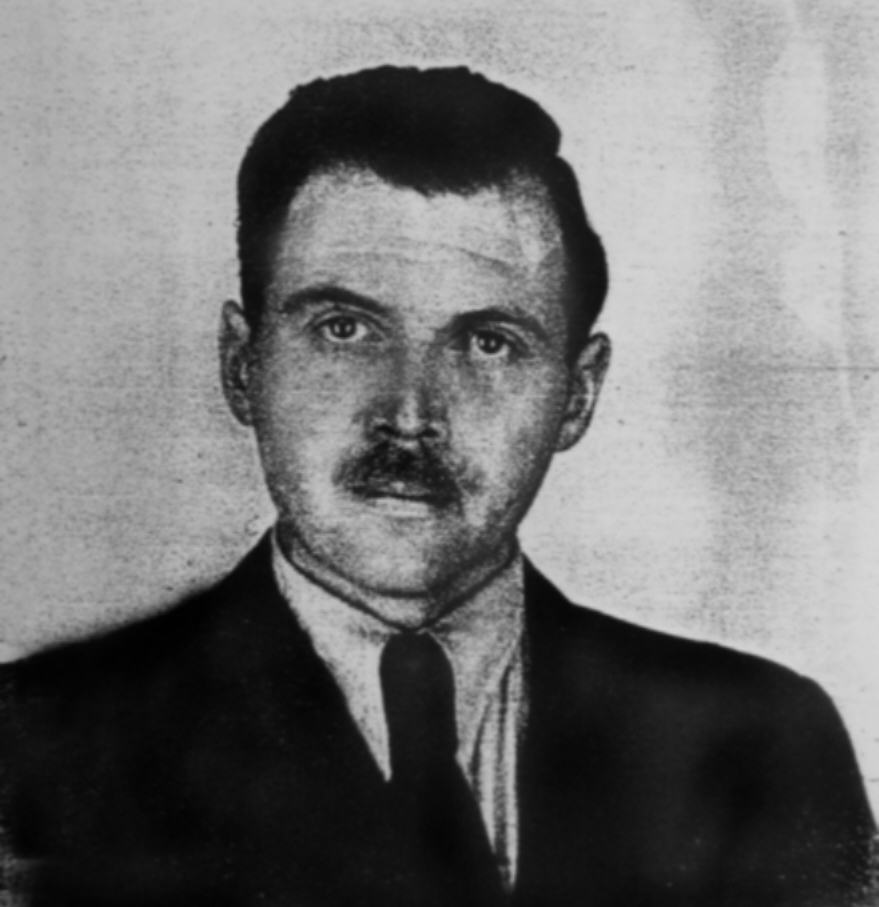Auschwitz Experiments – Medicine Turned into Crime
Auschwitz was not only the largest Nazi concentration and extermination camp but also a site of horrific medical experiments. Under the guise of science, SS doctors carried out procedures that ignored every principle of medicine and humanity. Prisoners were treated as test subjects – children, women, men, and Roma families became victims of experiments that left scars for life or ended in death. Documentation of these crimes is preserved at the Auschwitz-Birkenau Memorial.
Josef Mengele – Twin Experiments on Children
The most infamous figure associated with Auschwitz experiments was Josef Mengele, remembered as the “Angel of Death.” From 1943 he was present at selections on the Birkenau ramp, sending many to their deaths in the gas chambers. But his name is above all linked to experiments on children, especially twins.
Mengele believed that by studying twins he could uncover the secrets of genetics. About 1,500 pairs of twins – mostly Jewish and Roma children – were subjected to:

- endless body measurements and blood tests
- transfusions between siblings
- deliberate infections with diseases
- surgeries without anaesthesia
If one twin died, the other was often killed so that comparative autopsies could be performed. Survivors such as Eva Mozes Kor later testified to these atrocities, dedicating their lives to remembering the murdered children. The United States Holocaust Memorial Museum provides further insight into Mengele’s life and crimes.
Carl Clauberg – Sterilisation of Women
Carl Clauberg, a well-known German gynaecologist, used Auschwitz as a laboratory for mass sterilisation methods. He injected caustic substances directly into women’s uteruses, causing unbearable pain, infections, and death. His aim was to find an easy, cheap method of rendering women permanently infertile – a weapon of genocide.
Horst Schumann – Radiation Sterilisation
Another SS doctor, Horst Schumann, experimented with sterilising men and women using X-rays. Victims were exposed to high doses of radiation that destroyed reproductive organs, burned skin, and caused cancers. Afterwards, Schumann sometimes removed organs surgically for examination. Few survived these procedures.
Eduard Wirths – Pathology and Supervision
Eduard Wirths, the chief camp doctor (Standortarzt), oversaw the work of other SS physicians. He authorised experiments and performed pathological research, focusing on cancers of the female reproductive system. His role shows that medical crimes in Auschwitz were not the work of isolated individuals – they were systematically organised.
Helmuth Vetter and Pharmaceutical Companies
Helmuth Vetter collaborated with German pharmaceutical companies, including Bayer and IG Farben. Prisoners were used to test new drugs, vaccines, and chemical substances. Many died during these trials, while others suffered irreversible damage. Auschwitz thus became not only a site of Nazi ideology but also a testing ground for industrial interests.
Other SS Doctors and Medical Crimes
Besides these names, several other doctors committed crimes in Auschwitz:
- Friedrich Entress – tested poisons and drugs, causing rapid deaths.
- Hans Münch – participated in selections and supervised experiments.
- Siegfried Schwela and others – involved in routine medical examinations that decided life or death.
In total, about 20 SS doctors served in Auschwitz during different periods, many of them taking part in experiments or selections.
Scale, Evidence and Survivors’ Testimonies
Exact numbers of victims are unknown, as records were destroyed. Historians estimate that thousands of prisoners were killed in experiments, while many more were left mutilated or traumatised. Many were children, whose fate is described in more detail in Children in Auschwitz. Testimonies of survivors – particularly twins – remain the strongest evidence. Artefacts and documents preserved by the Auschwitz Museum bear witness to these crimes.
Aftermath and the Nuremberg Code
After the war, several doctors were tried at the Nuremberg Doctors’ Trial (1946–47). The world learned in detail about medical crimes in concentration camps, including Auschwitz. The result was the creation of the Nuremberg Code, a set of principles for ethical medical research, stressing informed consent and the rights of human subjects.
Not all perpetrators faced justice. Josef Mengele escaped to South America and lived under false names until his death in Brazil in 1979, never standing trial.
Remembering the Victims of Auschwitz Experiments
The story of Auschwitz experiments is not only about the perpetrators but above all about the victims – children, women, and men who suffered in the name of ideology and pseudoscience. Their memory is preserved in museums, survivor accounts, and educational projects. Remembering them reminds us that medicine without ethics becomes a tool of destruction.
